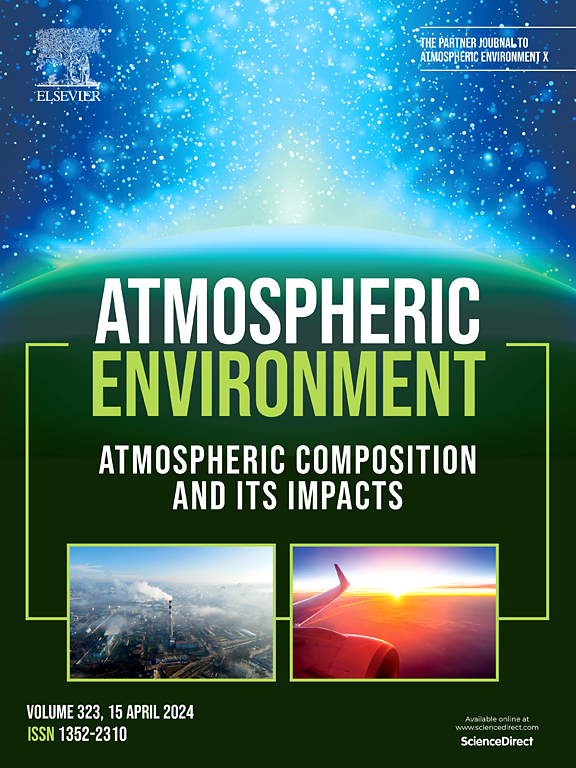Differential effects of size-specific PM components on stroke hospitalization in Northwest China's arid area
IF 3.7
2区 环境科学与生态学
Q2 ENVIRONMENTAL SCIENCES
引用次数: 0
Abstract
Atmospheric particulate pollution is an important risk factors for stroke. The aim of this study was to investigate the association of size-specific particulate matter (PM) and their components with stroke hospitalization in Northwest China's arid area from 2018 to 2022. Stroke hospitalization data were collected from Gansu Province. Size-specific PM with chemical speciation profiles and concurrent meteorological Data spatially aligned with the geographical coordinates of the included hospitals. The space-time-stratified case-crossover design and the conditional quasi-Poisson regression model were used to analyze the association between PM and stroke hospitalization, and stratified analysis was conducted based on age, gender, region, season and stroke type. This study included 759,473 stroke patients. PM1, PM1-2.5, PM2.5 and PM10 were all observed the highest risk of stroke hospitalization at lag 06 day, with RRs of 1.238 (95 % CI: 1.217–1.260), 1.057 (95 % CI: 1.049–1.066), 1.067 (95 % CI: 1.060–1.074) and 1.012 (95 % CI: 1.009–1.015). Among PM components, black carbon (BC) demonstrated the most pronounced association with stroke hospitalization risk (PM2.5, RR = 1.045 per 1 μg/m3 increase, 95 % CI:1.037–1.054; PM1 and PM10, RR = 1.580 per 1 μg/m3 increase, 95 % CI:1.535–1.626). Subgroup analyses further indicated greater vulnerability among women, the elderly, during the cold season, and for ischemic stroke (IS) compared to hemorrhagic stroke (HS). Our findings indicate strict air quality intervention measures based on size-specific effect of PM should be taken to reduce the burden of stroke.
不同粒径PM组分对西北干旱区脑卒中住院的影响
大气颗粒物污染是脑卒中的重要危险因素。本研究旨在探讨2018 - 2022年中国西北干旱区尺度特异性颗粒物(PM)及其组分与脑卒中住院的关系。脑卒中住院数据收集自甘肃省。具有化学形态概况和同步气象数据的特定尺寸PM在空间上与所包括医院的地理坐标保持一致。采用时空分层病例交叉设计和条件准泊松回归模型分析PM与脑卒中住院的相关性,并根据年龄、性别、地区、季节、脑卒中类型进行分层分析。这项研究包括759,473名中风患者。PM1、PM1-2.5、PM2.5和PM10在延迟06 d时卒中住院风险最高,相对危险度分别为1.238 (95% CI: 1.217 ~ 1.260)、1.057 (95% CI: 1.049 ~ 1.066)、1.067 (95% CI: 1.060 ~ 1.074)和1.012 (95% CI: 1.009 ~ 1.015)。在PM成分中,黑碳(BC)与卒中住院风险的相关性最显著(PM2.5,每增加1 μg/m3 RR = 1.045, 95% CI:1.037 ~ 1.054; PM1和PM10,每增加1 μg/m3 RR = 1.580, 95% CI:1.535 ~ 1.626)。亚组分析进一步表明,与出血性中风(HS)相比,女性、老年人、寒冷季节和缺血性中风(IS)的易感性更大。我们的研究结果表明,应采取严格的空气质量干预措施,基于颗粒物的大小特异性效应,以减轻中风的负担。
本文章由计算机程序翻译,如有差异,请以英文原文为准。
求助全文
约1分钟内获得全文
求助全文
来源期刊

Atmospheric Environment
环境科学-环境科学
CiteScore
9.40
自引率
8.00%
发文量
458
审稿时长
53 days
期刊介绍:
Atmospheric Environment has an open access mirror journal Atmospheric Environment: X, sharing the same aims and scope, editorial team, submission system and rigorous peer review.
Atmospheric Environment is the international journal for scientists in different disciplines related to atmospheric composition and its impacts. The journal publishes scientific articles with atmospheric relevance of emissions and depositions of gaseous and particulate compounds, chemical processes and physical effects in the atmosphere, as well as impacts of the changing atmospheric composition on human health, air quality, climate change, and ecosystems.
 求助内容:
求助内容: 应助结果提醒方式:
应助结果提醒方式:


